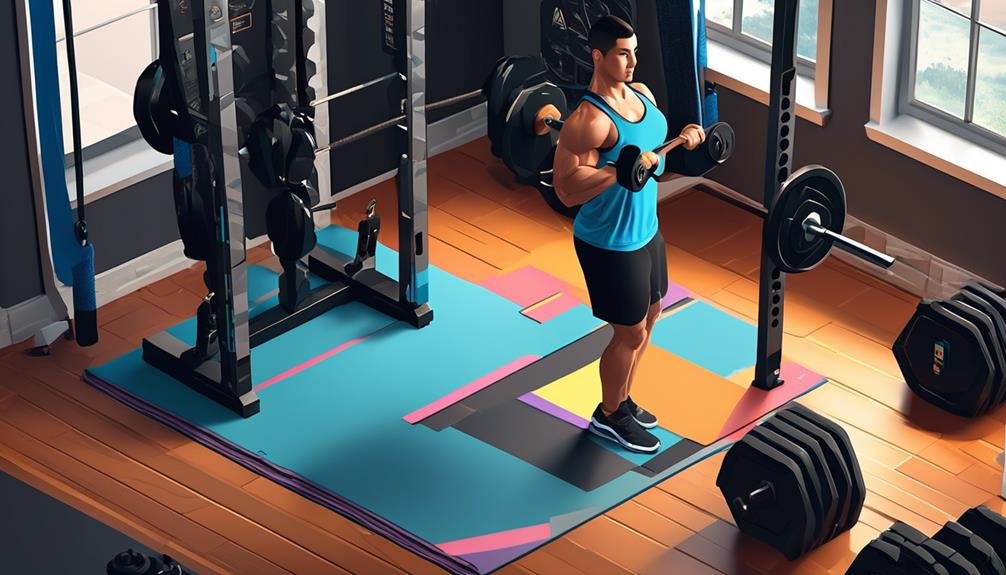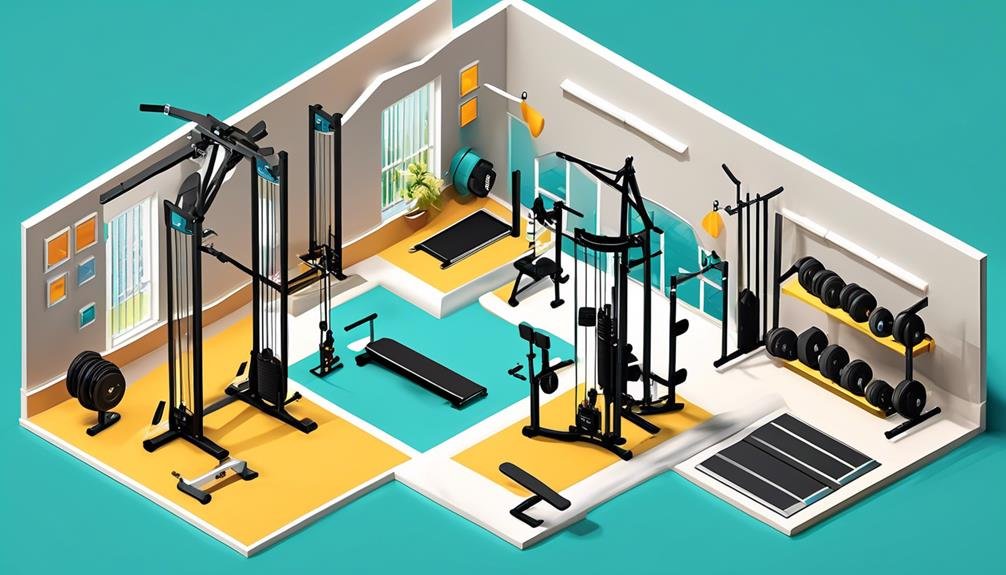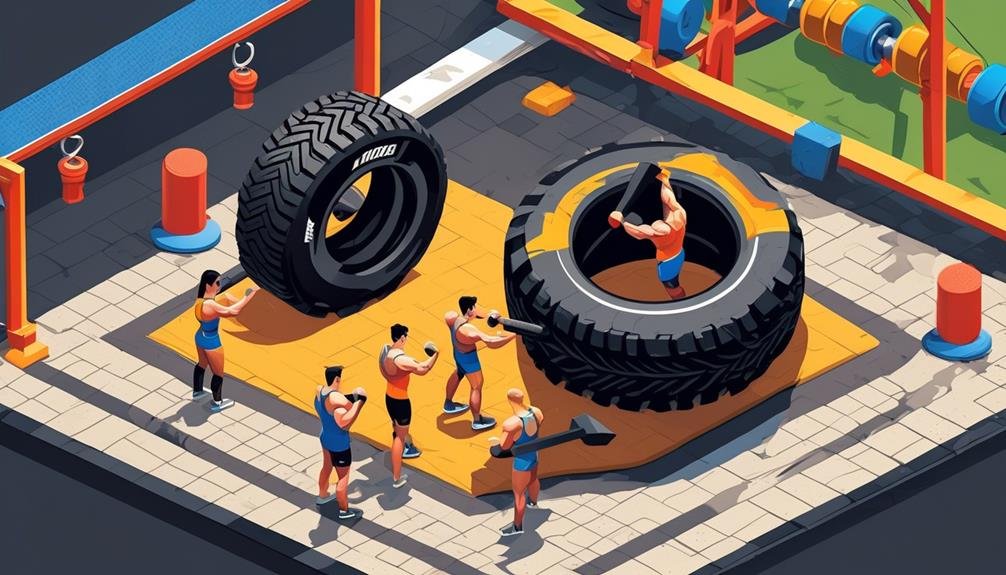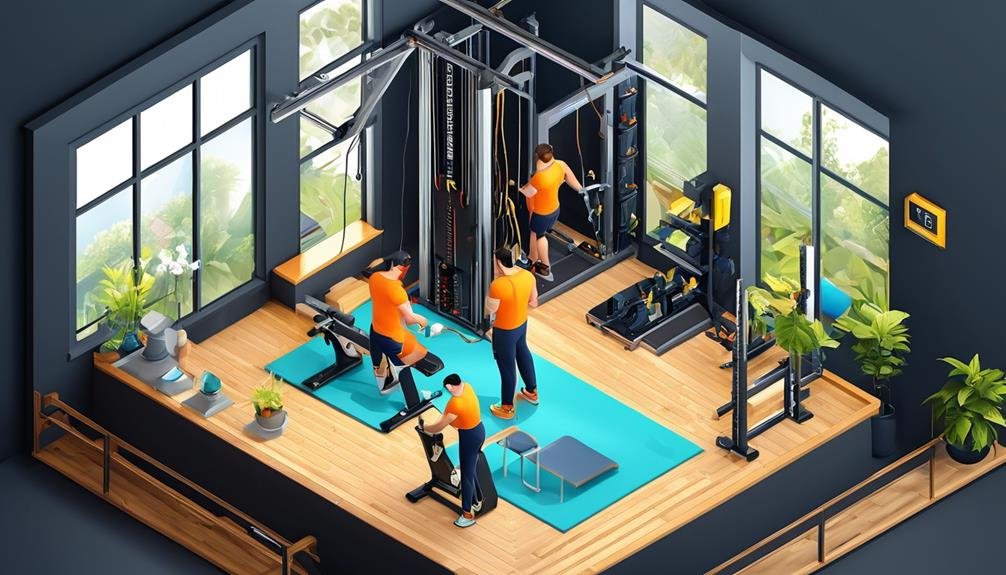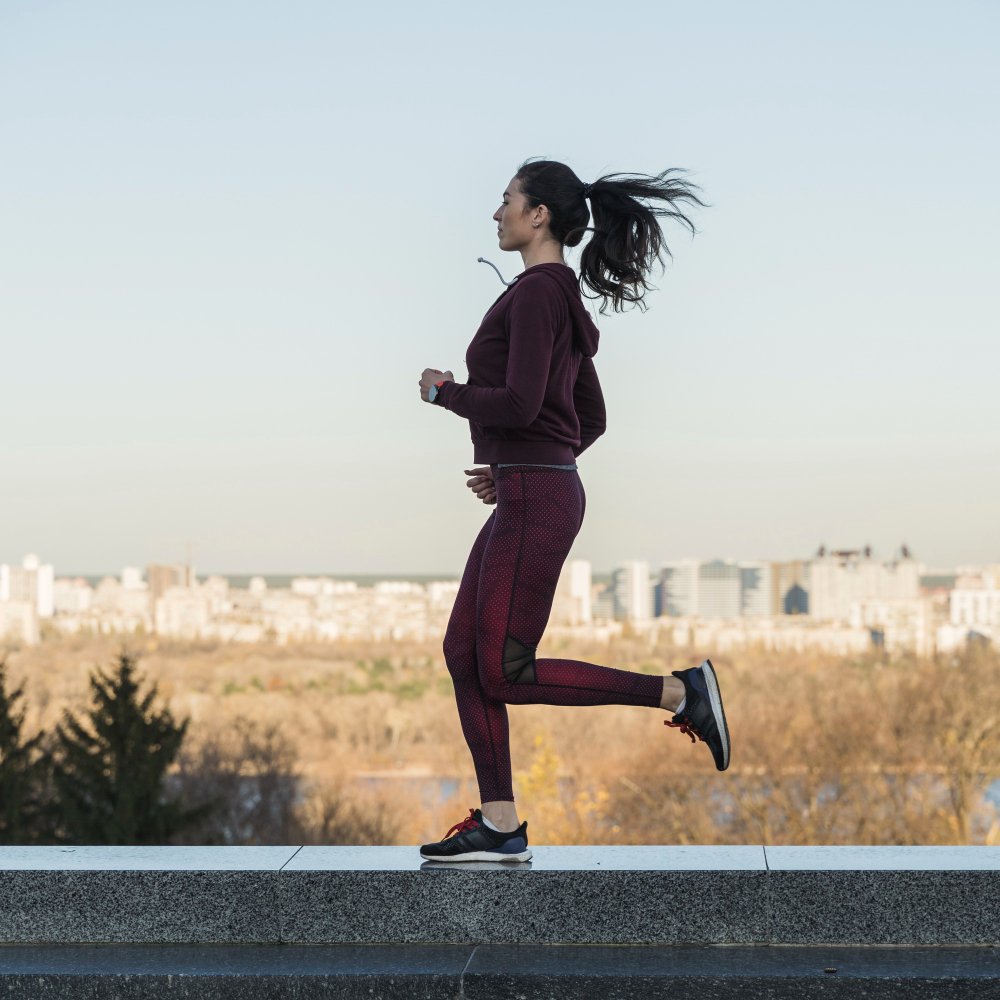Are you tired of feeling like your spine is about to snap in half every time you attempt a heavy lift at home? Well, fear not, because there is a solution that can provide you with the stability and support you need: a lifting belt.
But how do you use it safely without causing more harm than good? In this discussion, we will explore the proper techniques for wearing a lifting belt, the precautions you should take, and how to maximize its effectiveness.
So, if you're ready to learn how to protect your back and take your heavy training to the next level, let's dive in.
Key Takeaways
- A lifting belt can provide support and stability for your back during heavy lifts, reducing the risk of injury.
- Proper technique for wearing a lifting belt includes positioning it around your lower back, ensuring it is snug but not too tight, and centering it properly.
- Factors to consider when buying a lifting belt include the thickness, material options, latching mechanisms, and sport-specific needs.
- Individuals who regularly perform heavy lifts should use a lifting belt as a supplement to training, focusing on building core strength and technique.
Benefits of Using a Lifting Belt
Using a lifting belt can provide numerous benefits when engaging in heavy training at home. The primary benefit of using a weightlifting belt is the support and stability it provides for your back during heavy lifts. This is crucial because heavy lifting puts a significant strain on your back, increasing the risk of injury. By wearing a lifting belt, you can maintain proper form and alignment, reducing the risk of back pain and injury. Additionally, a weightlifting belt helps increase intra-abdominal pressure, leading to improved core strength and stability. This is important because a strong core is essential for overall strength and preventing injuries.
Another advantage of using a lifting belt is that it allows for greater force production and transfer, resulting in increased strength gains. When you wear a belt, it acts as a brace, allowing you to generate more power and transfer it efficiently to the barbell or weights. This can help you lift heavier weights and make progress in your strength training journey.
Furthermore, wearing a lifting belt can boost your confidence and mental focus during challenging lifts. The feeling of having a supportive brace around your core can give you the reassurance you need to push through tough workouts. It also helps you maintain proper breathing and bracing techniques, which are crucial for optimal performance and injury prevention.
To reap these benefits, it's important to learn how to brace properly with a lifting belt. This involves taking a deep breath into your diaphragm and pushing your abs against the belt, creating a tight and stable core. By following these guidelines and using a lifting belt correctly, you can increase your safety, performance, and overall effectiveness of your heavy training at home.
Proper Technique for Wearing a Lifting Belt
To ensure proper technique and maximize the benefits of a lifting belt, it's essential to understand how to wear it correctly. Wearing a lifting belt improperly can reduce its effectiveness and potentially lead to injury. Follow these guidelines to ensure you're wearing your lifting belt correctly:
- Position the belt around your lower back, just above your hip bones.
- Ensure the belt is snug but not too tight. You should be able to fit two fingers between your body and the belt.
- Fasten the belt securely, making sure it's centered on your lower back.
Wearing a lifting belt properly provides several benefits. Firstly, it helps to stabilize your spine by increasing intra-abdominal pressure, which reduces stress on your lower back. Secondly, it can improve your lifting technique by reminding you to engage your core muscles and maintain proper posture. Lastly, it can increase your overall strength by providing extra support for your core muscles during heavy lifting.
Factors to Consider When Buying a Lifting Belt

When considering purchasing a lifting belt, there are important factors to take into account for ensuring optimal performance and safety, building upon the proper technique discussed previously.
One factor to consider is the thickness of the belt. The thickness affects the rigidity of the belt and its suitability for different types of lifts. A thicker belt provides more support and stability, especially when lifting heavy.
Additionally, it's crucial to choose a belt that's comfortably tight. It should allow for one finger to fit between the body and the belt to ensure proper support while not being too constricting.
Another factor to consider is the material of the belt. There are two common options: nylon and leather. Nylon belts are lightweight and provide flexibility, making them suitable for dynamic movements. Leather belts, on the other hand, offer more rigidity and durability, making them ideal for heavy lifting and maximal loads. It's important to choose the material based on personal comfort and performance preferences.
The latching mechanism is another factor to consider. Different belts come with various latching mechanisms such as Velcro, lever, or prong. These mechanisms offer varying levels of security and adjustability. Choose a latching mechanism that provides a secure fit and allows for easy adjustments during training sessions.
Lastly, it's essential to consider any sport-specific needs and regulations on belt usage for competitions. Some sports may have specific requirements regarding belt thickness or material. It's important to be aware of these regulations to ensure compliance.
Who Should Use a Lifting Belt
Lifting belts are a valuable tool for individuals who engage in heavy and maximal weight training to enhance performance and safety. While not essential for most recreational exercisers, if you're a serious lifter and want to lift heavier weights, using a lifting belt can be beneficial.
Here are a few key considerations for determining if a lifting belt is right for you:
- Heavy lifts: If you regularly perform heavy lifts, such as deadlifts, squats, or overhead presses, a lifting belt can provide additional support to your core muscles. This can help you maintain proper form and stability, especially when lifting near your maximum capacity.
- False sense of security: It's important to note that wearing a lifting belt shouldn't replace proper technique and training. While a belt can provide support, it shouldn't give you a false sense of security. It's still crucial to build a strong foundation of core strength and stability through regular training.
- Belt properly: To get the most out of using a lifting belt, it's essential to wear it properly. Position the belt snugly around your waist, just above your hip bones. Make sure it's tight enough to provide support but not so tight that it restricts your breathing or range of motion.
Using a lifting belt can help you lift heavier weights and enhance your overall performance. However, it's crucial to remember that a belt is just one tool in your training toolbox. Focus on building a solid foundation of strength and technique, and use the belt as a supplement to your training, not a crutch.
Precautions for Safe Lifting Belt Usage
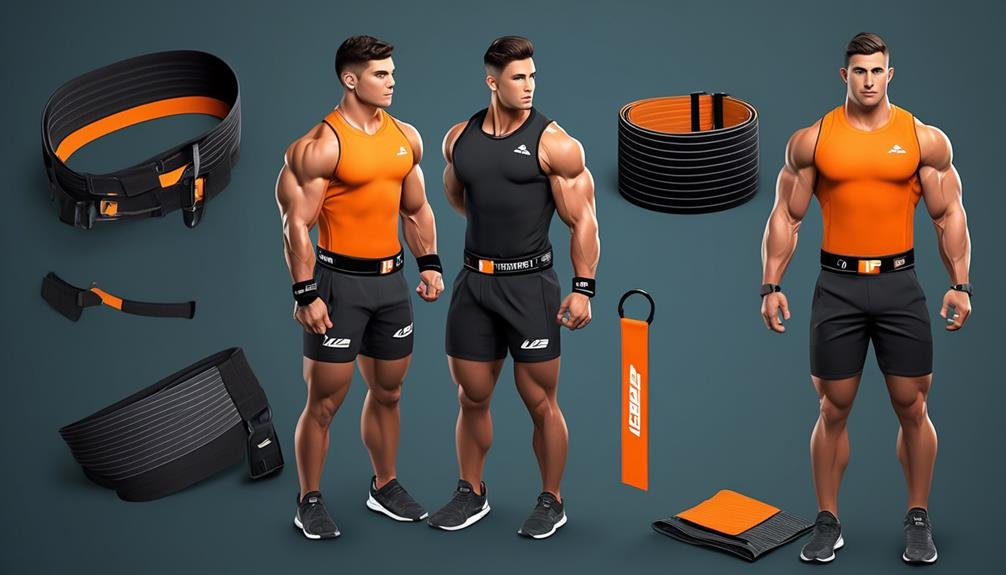
Ensure that your lifting belt fits properly and is worn snugly, but not too tight, to avoid restricting your breathing.
A weightlifting belt is a valuable tool that can help you move more weight safely during your heavy training sessions at home. However, it's important to understand that the belt shouldn't be relied upon solely for support. Instead, focus on developing proper lifting technique and core strength.
Start by mastering the correct form and technique without wearing a weightlifting belt. Once you have established a solid foundation, gradually introduce the belt for heavy compound lifts. It's crucial to avoid over-reliance on the belt. Reserve its usage for maximal or near-maximal lifts to ensure that you're still building strength and stability without external support.
Additionally, it's recommended to seek guidance from a qualified fitness professional or coach to learn how to properly wear a weight belt and know how to brace your core effectively while using it.
How to Maximize the Effectiveness of a Lifting Belt
To maximize the effectiveness of your lifting belt, it's essential to properly position it on your torso and practice correct bracing mechanics. Here are some key tips to help you get the most out of your weightlifting belt:
- Positioning: Ensure the belt sits just above your hip bone, providing full contact across your back, sides, and front. This ensures optimal support and stability during heavy lifts.
- Tightness: When wearing a belt, tighten it enough to provide support, but allow room for your stomach to expand during bracing. This will help maintain proper breathing patterns and maximize the effectiveness of the belt.
- Pushing against the belt: Actively push against the belt from every angle when bracing. This creates intra-abdominal pressure, enhancing core stability and strength during heavy lifts.
Frequently Asked Questions
Should You Use a Belt When Lifting Heavy?
Yes, you should use a belt when lifting heavy. It helps support your lower back and core, improving stability and reducing the risk of injury. Make sure to choose the right belt and use proper bracing techniques for maximum effectiveness.
What Are the Disadvantages of a Weight Lifting Belt?
Using a weightlifting belt has disadvantages. It can make you rely on it too much, neglect proper technique, and give a false sense of security. It may also increase blood pressure and encourage lifting beyond your limits.
How Much Weight Do I Need to Lift to Use a Belt?
You should start using a lifting belt when you're lifting heavy weights close to your maximum capacity. It provides added support and stability. Gradually introduce the belt as you progress and handle heavier loads.
How Do You Properly Wear a Lifting Belt?
Position the lifting belt just above your hip bones and below your ribs. Tighten it snugly, allowing room for your stomach to expand. Engage in proper bracing mechanics and actively push against the belt while breathing from your diaphragm.
Conclusion
In conclusion, when using a lifting belt for heavy training at home, it's essential to engage your core muscles and practice proper lifting technique. Remember to avoid relying solely on the belt and continue developing your core strength.
Regularly check the condition of the belt and consult with a fitness professional for guidance. By following these precautions and maximizing the effectiveness of the lifting belt, you can safely enhance stability and support during your heavy training sessions.
